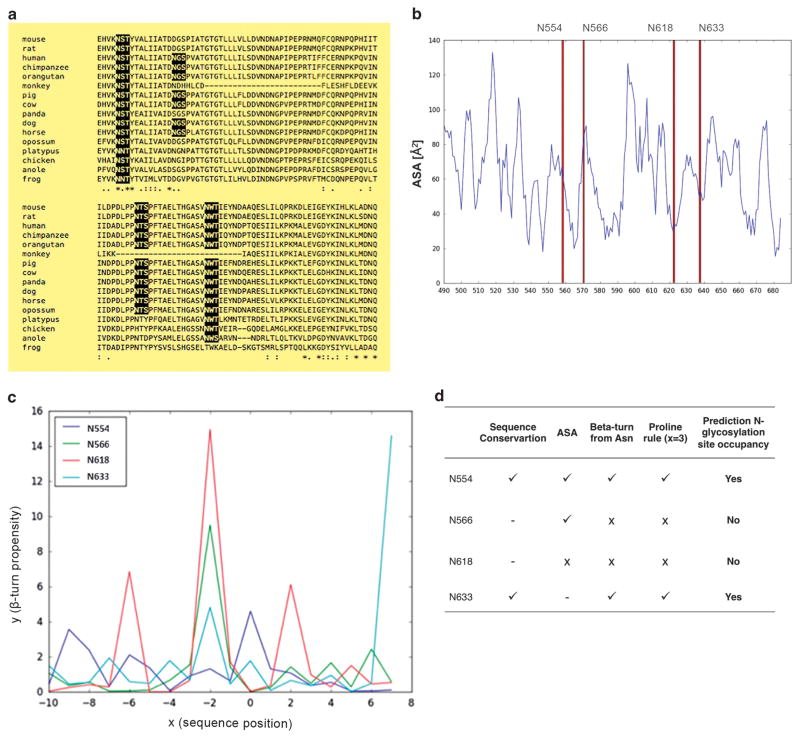Figure 2.
Prediction of E-cadherin N-glycan site occupancy based on bioinformatics. (a) Species homology of the E-cadherin peptide sequence. The potential N-glycosylation sites Asn-554 and Asn-633 are well conserved. (b) Calculation of ASA of the four Asn residues. The potential N-glycosylation site Asn-618 displays a low ASA value. (c) Evaluation of β-turn propensity of the region adjacent to the Asn-X-Ser/Thr acceptor sequence. Horizontal axis (x) indicates sequence position around the sequon (x = 0: Asn), and vertical axis (y) shows the β-turn propensity. For x = 0, high values of β-turn propensity mean high possibility for N-glycosylation to occur. (d) Prediction of E-cadherin N-glycan’s occupancy. Asn-554 and Asn-633 are the two putative N-glycosylation sites more likely to be occupied.

